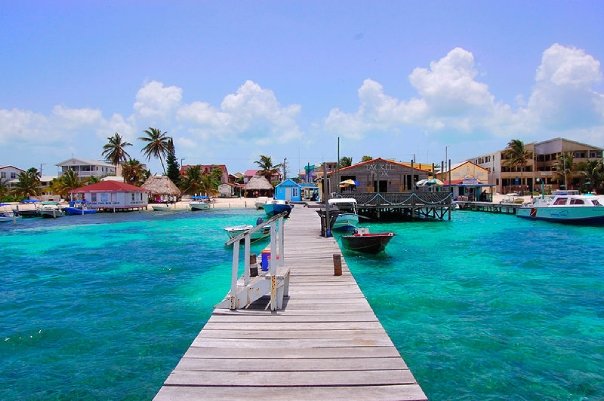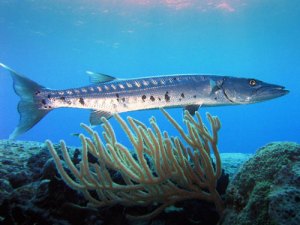The Barracuda.
The Barracuda has a long, slender and silver cylindrical body covered with small scales and can grow up to 6 feet in length. They have a hard bony skeleton covered by strong muscles that assists them to propel through water at great speeds. This speed becomes useful when it is time to feed. Their long jaws, with visible pointed teeth, is quite distinctive. Their teeth is capable of immense tearing of the barracuda's food source.The Barracuda lives around reefs and other areas where food sources live. Small barracudas are often seen in shallow waters along the shore while larger ones are usually in deeper waters. They may be found alone or in small groups.
For feeding purposes the barracuda has a technique of racing through a school of fish with its blade like teeth attacking them. when it injures and immobilizes some of the fishes, it returns to snatch them up. It's clear that the barracuda has truly honed their predatory skills. They often use their highly evolved instincts to take advantage of the disorder that occurs around dusk, when the nighttime fish switch places with the daytime fish. It is at this time, when their prey least expects it, they attack. The prey of choice for the barracuda are fishes that feed on algae growing on the coral reef.
The barracudas spawn just like many other fishes, but very few details are known. It is known that fertilized eggs drift in ocean currents and the eggs develop in the open ocean. New born barracudas that are less than a quarter-inch in length do not have barracuda traits, They must grow to approximately a half inch in length before it begins to show physical barracuda characteristics. The Barracuda does not attend to their young. There are theories that barracudas may spawn more than once a year and spawning patterns may be different from one part of the world to another. Learn more about Belize, see videos about Belize, book a vacation package or tour in Belize, Join Future Perfect's leisure Travel Club for free.







No comments:
Post a Comment